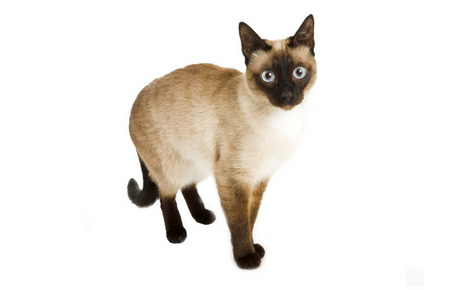Introduction
The Siamese cat, with its striking appearance and vocal nature, is one of the oldest and most recognizable cat breeds. Originating from Thailand (formerly Siam), these cats have a rich history intertwined with royalty and myth. This article provides a detailed exploration of the Siamese cat breed, covering its history, physical characteristics, temperament, and care needs.
History
Siamese cats have a long and storied history, dating back to ancient Thailand. They were esteemed by Thai royalty and believed to possess the souls of deceased royals. Early manuscripts such as the “Cat-Book Poems” from Ayudha depict these cats, illustrating their slim bodies and distinctive point coloration.
The breed made its way to the Western world in the late 19th century. In 1884, a British consul general in Bangkok gifted a pair of Siamese cats to his sister, marking their introduction to Britain. Despite initial mixed reactions, the breed quickly gained popularity in both Britain and America, with the first American Siamese cat reportedly residing in the White House in 1878.
Physical Characteristics
Siamese cats are known for their sleek, muscular bodies, almond-shaped blue eyes, and distinct color points on their ears, face, paws, and tail. The breed comes in various color points, including seal, chocolate, blue, and lilac. These color points are a result of a temperature-sensitive enzyme that causes color variation based on body temperature.
The Siamese breed is divided into two types: the Traditional Siamese (Applehead) and the Modern Siamese (Wedgehead). The Traditional Siamese has a rounder head and a more robust body, while the Modern Siamese features a more elongated, slender body and a wedge-shaped head.
Temperament and Behavior
Siamese cats are renowned for their vocal and social nature. They are highly intelligent and affectionate, often forming strong bonds with their human companions. These cats crave attention and can become quite demanding if not given enough interaction.
Their vocalizations are not just random meows but are attempts at communication, making them quite engaging pets. However, this constant need for interaction means they do not do well when left alone for long periods.
Care and Maintenance
Siamese cats require a stimulating environment due to their high intelligence and energy levels. Providing plenty of toys, climbing trees, and interactive playtime is essential to keep them mentally and physically stimulated.
Their short coat is easy to care for, requiring minimal grooming. However, their active and social nature means they need regular attention and play to prevent boredom and associated behavioral issues.
Health Considerations
Siamese cats are generally healthy, but they can be prone to certain genetic conditions. These include progressive retinal atrophy (PRA), which can lead to blindness, and respiratory issues due to their elongated facial structure.
Regular veterinary check-ups are crucial to monitor their health and address any issues early. A balanced diet and regular exercise also play vital roles in maintaining their overall well-being.
Breeding and Genetics
The Siamese breed has contributed to the development of several other cat breeds, including the Balinese, Himalayan, and Oriental Shorthair. Their genetic diversity has made them a foundation breed for these other varieties, which share some of the Siamese’s distinctive traits.
Conclusion
Siamese cats are a fascinating and beloved breed with a rich history and distinctive characteristics. Their vocal and social nature makes them wonderful companions for those who can provide the attention and interaction they crave. With proper care and a stimulating environment, Siamese cats can thrive and bring joy to their owners for many years.
By understanding their history, physical traits, and care needs, prospective owners can ensure they are well-prepared to welcome a Siamese cat into their home.

